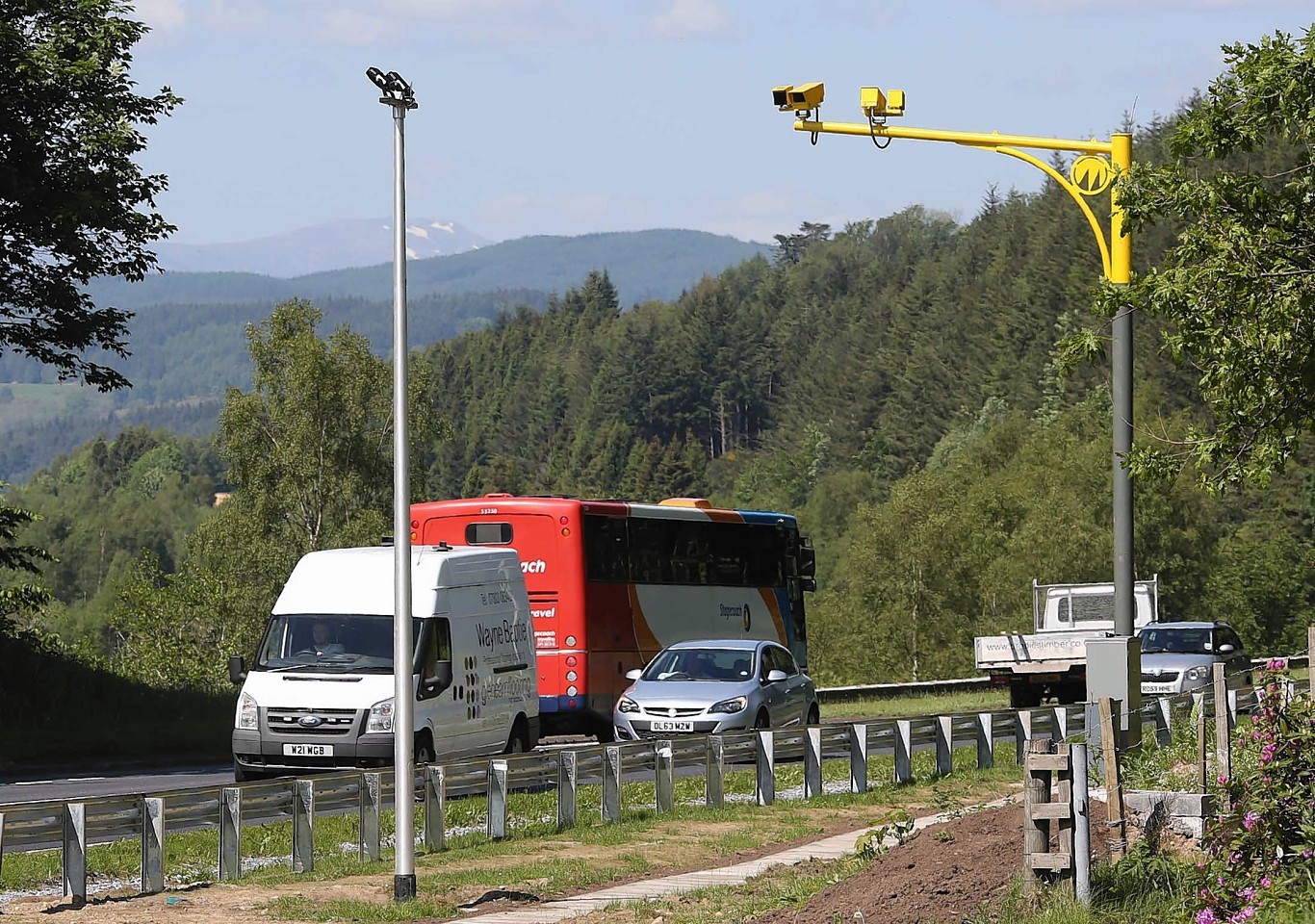Speeding motorists could lose their licences in a single journey on the A9 under a controversial new safety regime.
Transport Scotland said drivers would be fined £100 and given three penalty points every time they are flashed by an average speed camera in each of the eight enforcement zones between Inverness and Perth.
Anyone caught breaking the limit – 60mph for cars or 50mph for lorries – in just four of the stretches will clock up 12 penalty points.
The tally would be enough to spark a ban for someone starting journey with a clean licence.
Last night campaigners warned the threat could actually increase the potential for accidents, by focusing drivers’ attention on the cameras, rather than other road hazards.
One business leader said he was worried that people who make the journey regularly could lose their livelihoods due to momentary lapses in concentration.
The risks were spelled out to members of Holyrood’s infrastructure and capital investment committee yesterday.
Work is already underway to install the cameras which are due to be switched on in October.
The Scottish Government is confident that the £2.5million scheme will cut the death toll on the notorious road, reduce speeding and improve safety.
Drivers will have no way of telling whether the digital cameras – nicknamed yellow vultures due to their shape – in a particular zone are active or not.
Scottish Government official Stuart Wilson said: “The point for drivers is you shouldn’t know because you should drive at the speed limit.”
Mr Wilson said the operating strategy would be the responsibility of local safety camera partnerships and insisted average speed devices were “fairer” than fixed models because motorists were given the opportunity to adjust their driving over a long distance.
Transport Minister Keith Brown told the committee the scheme, which is expected to be completed by 2025, was essential to protect people working on the £3billion project to dual the A9 between Inverness to Perth.
But Stewart Nicol, chief executive of Inverness Chamber of Commerce, said he had concerns about the system.
He said some of his members made the trip up and down the A9 several times a week, adding: “It would not take much loss of concentration to put their livelihoods at risk.
“The other concern is that people are going to be concentrating on trying to make sure they are not breaking the law, rather than focusing on driving safely.
“Those driving for years know the road inside out but there are an increasing number of people who do not know it and are confused by it. The speed camera dynamic makes that journey all the more challenging.”
Highland Liberal Democrat MP Danny Alexander has vowed to continue his efforts to persuade SNP ministers to scrap the scheme.
The Chief Secretary to the Treasury has urged political parties and business organisations to join forces to stop the cameras and join his new Highland Infrastructure Forum.
Mr Alexander and the leader of the public campaign against the devices, Mike Burns, of Foyers, argue that the scheme will increase frustration and accidents.
A petition raised by Mr Burns has attracted 9,100 signatures of support.
Last night, a Transport Scotland spokesman said: “The A9 Safety Group is committed to reducing casualties on the route through education, enforcement and engineering.
“Anyone persistently speeding risks penalties, whether that is as a result of the average speed cameras or the fixed cameras that are currently used.
“However, the average speed cameras are highly conspicuous and achieve very good compliance so we would expect that drivers would modify their speed and also their driving behaviour, bringing additional safety benefits.”
